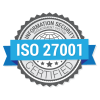The role of a Procurement Director is fraught with challenges. According to research conducted by the job search platform Zippia[1], Procurement Directors maintain their positions for an average of only 1 to 2 years, with over 60% leaving before reaching their fourth year. This high turnover rate clearly shows the significant challenges inherent in the role.
There’s a lot of studies in the market that can help us understand some of the reasons for such short tenures. MIT Sloan School of Management[2] and Deloitte[3] found that more than 82% of organizations struggles to analyze unstructured data – which is data that does not adhere to conventional data models (like forms, e-mails, internal reports, etc) – and therefore are much harder to interpret and process them effectively. That is a considerable untapped resource with the potential to create competitive advantage for companies that figure out how to use it.
In this article, we will explore the critical role of data in the procurement process, identifying essential data points for procurement excellence, the importance of creating a unified data repository, leveraging technology to enhance data management, and the strategic benefits of a unified source of record.
By examining these areas, we aim to provide a comprehensive guide to establishing a robust framework for procurement data management that can significantly improve decision-making, risk management, and long-term strategic planning in the procurement function.
Identifying the Right Data
Understanding what constitutes ‘the right data’ is pivotal. Essential data points include Spend, Pricing, and Demand, which can be found in structured documents like invoices, contracts, purchase orders, and ERP spend data or unstructured data such as emails, internal reports, timesheets, facility locations, etc. These documents are essential for cross-verifying expenditures and contract compliance.
Why is it important to have these documents easily accessible? Because procurement data has a dynamic nature and plays a multifaceted role in enhancing operational efficiency and strategic planning. For instance, spend data not only informs about the past and current expenditures but also helps in forecasting future needs and budgeting. Similarly, pricing data, when analyzed over time, can reveal trends and patterns that are crucial for negotiating better terms with suppliers or identifying opportunities for cost savings. Demand data, on the other hand, assists in understanding the consumption patterns within the organization, enabling more accurate planning and reducing waste or stockouts.
Having the right documentation to identify, gather and utilize all of these data points is a cornerstone in building a resilient and responsive procurement strategy. By leveraging detailed analytics and insights derived from these key data sets, organizations can achieve a higher level of procurement maturity, marked by optimized spending, improved supplier relationships, and enhanced overall value contribution to the business.
Creating a Unified Data Repository
The challenge lies in consolidating these diverse data types into a singular, secure manageable location. When consolidating data, it is important to consider:
-
- Data Accessibility: Ensuring that data is easily retrievable and understandable.
-
- Security and Compliance: Keeping sensitive information secure while complying with data protection regulations.
-
- Integration with Existing Systems: Seamlessly blending the new repository with current operational tools.
Establishing a unified data repository necessitates a strategic approach that goes beyond the initial selection of a platform. It involves a detailed planning phase where the specific needs of the procurement function are mapped out, including data volume, variety, and velocity. This phase should also account for the scalability of the solution, ensuring that the repository can grow and adapt as the organization’s needs evolve.
The process of data consolidation should also be accompanied by the establishment of standardized data formats and taxonomies, facilitating easier data retrieval and analysis. This standardization is key to transforming raw data into actionable insights, enabling procurement professionals to make informed decisions quickly.
Another critical aspect is the implementation of robust data governance policies, which ensure that data integrity is maintained, and that the repository remains a reliable source of truth. These policies should cover data entry, maintenance, and archiving procedures, as well as roles and responsibilities concerning data management. Additionally, user training and support are essential components of a successful implementation, as they ensure that all stakeholders understand how to effectively use the repository and contribute to its ongoing accuracy and relevance.
If these areas are properly addressed, organizations can create a unified data repository that serves as a centralized storage solution that becomes a powerful tool for enhancing procurement processes and outcomes.
Leveraging Technology for Data Consolidation
Now this all seems like an endless pool of work, doesn’t it? That’s where technology comes in to save the day. Embracing digital tools for data management is crucial to be able to stay current in the rapidly evolving technological landscape. These solutions enhance collaboration across departments, facilitating a more integrated approach to procurement management. Cloud platforms often come with built-in security features that ensure data is protected against unauthorized access and cyber threats, addressing the critical requirement for data security and compliance.
If you’re focus is just being able to securely store and access all your procurement data from anywhere, at any time, opting for platforms like SharePoint or Google Drive can be transformative for data accessibility in your organization. If you’re looking to supercharge your procurement data with insights in addition to storage and accessibility capabilities, the Thinking Machine Platform might be the best fit for you.
Thinking Machine is an AI-powered cloud-based solution for data extraction from documents which can also work as a centralized data storage of your procurement documents. The Thinking Machine Platform offers capabilities not only in data extraction, but it can automatically identify data that’s relevant to your spend wherever structured data about assets, timesheets, facility locations, services are missing. It also automatically classifies that data into linked categories, making it easier to analyze spending patterns and identify even more savings opportunities.
Beyond these capabilities, the platform leverages sophisticated algorithms to examine historical demand data in relation to existing contracts. This analysis empowers procurement teams to negotiate more effectively and make decisions that are not only reactive but also proactive.
Benefits of a Single Source of Record
A unified source of record for procurement data provides a foundational element for strategic decision-making, risk management, and long-term planning. This centralized approach to data management can streamlines processes and unlock a multitude of strategic benefits to your organization:
-
- Enhanced Strategic Decision Making: Centralizing data in a single repository significantly improves the quality and speed of decision-making processes. With comprehensive data at their fingertips, procurement teams can conduct thorough analyses, identify trends, and make informed decisions that align with organizational goals. This level of insight enables a shift from reactive procurement to a more strategic, proactive approach.
-
- Improved Risk Management: A unified data source offers unparalleled visibility into procurement activities, supplier performance, and contract compliance. This visibility is crucial for identifying potential risks early on, such as supplier reliability issues or contract non-compliance, allowing for timely mitigation strategies. Moreover, enhanced data insights facilitate better assessment of market conditions and supplier health, further reducing procurement risks.
-
- Facilitated Long-Term Strategic Planning: Access to a centralized and comprehensive dataset empowers organizations to move beyond short-term cost savings, focusing instead on long-term value creation. It enables procurement leaders to develop and implement strategic initiatives, such as supplier relationship management and category management, that drive long-term efficiency and innovation. This strategic planning is supported by data-driven insights, ensuring that procurement activities contribute to the overall business strategy and objectives.
-
- Streamline Operations and Increased Efficiency: A single source of record simplifies data management and reduces the complexity of handling multiple data sources. This streamlining of operations leads to significant time and cost savings, as teams spend less time searching for and reconciling data. Additionally, the standardization of data formats and procedures enhances operational efficiency and productivity, further contributing to the organization’s bottom line.
-
- Data Integrity and Quality: Maintaining a unified source of record enhances data integrity and quality by ensuring consistency in data entry, storage, and retrieval processes. This consistency is key to generating reliable analytics and reports, which in turn support accurate and confident decision-making.
Setting up a single source for all procurement data is a smart move for any organization. It makes the job of procurement directors and their teams much simpler and more effective. With all the data in one place, making decisions gets easier, managing risks becomes straightforward, and planning for the future is clearer. This approach ensures that procurement efforts are in line with what the business aims to achieve, proving how crucial procurement is to the success of the whole organization.
Having one go-to spot for data helps procurement teams deal with the complex nature of today’s supply chains more easily. It leads to a procurement setup that’s quick to adapt, stays ahead of challenges, and uses data smartly to bring in more value and innovation.
If what you’ve read resonates with you—if you see the potential for what procurement could be, rather than just what it is—I invite you to book a strategy call with us. Let’s discuss how Thinking Machine can provide the insights and efficiencies you’ve been seeking. It’s time to turn data into one of your most strategic assets and allow the advanced analytics of our platform to reveal opportunities that have been hidden in plain sight.
To start your journey with Thinking Machine, please reach out to us at sales@thinkingmachine.co. Together, we can build a legacy of efficiency, savings, and strategic success in your procurement operations.
[1] https://www.zippia.com/director-procurement-jobs/demographics/
[2] https://mitsloan.mit.edu/ideas-made-to-matter/tapping-power-unstructured-data
[3] https://www2.deloitte.com/us/en/insights/topics/analytics/insight-driven-organization.html


